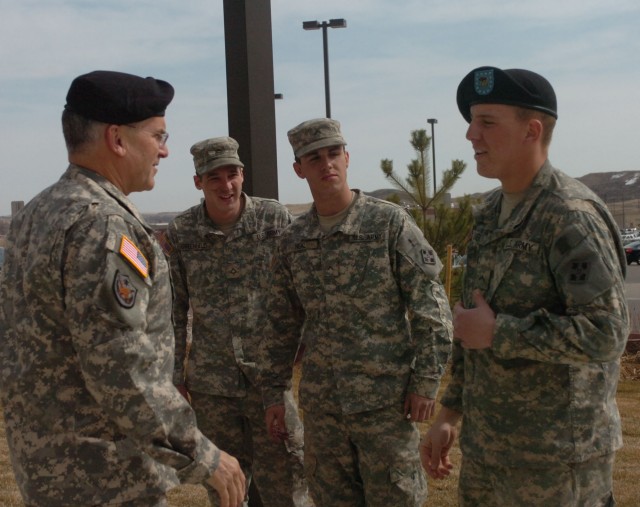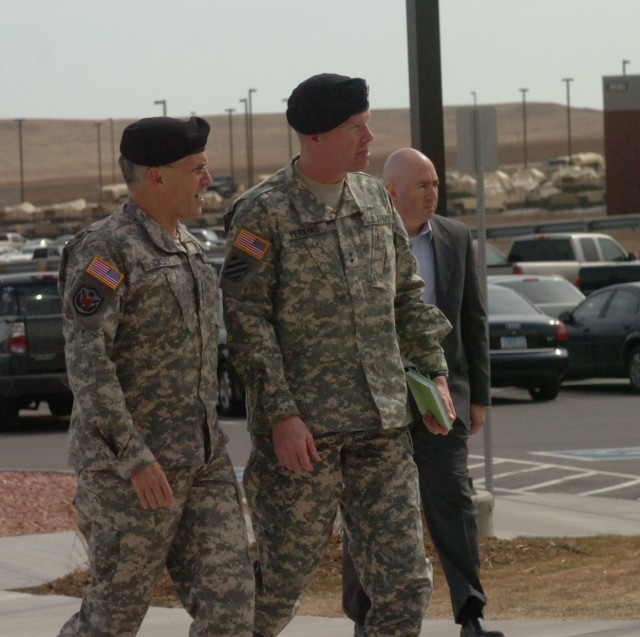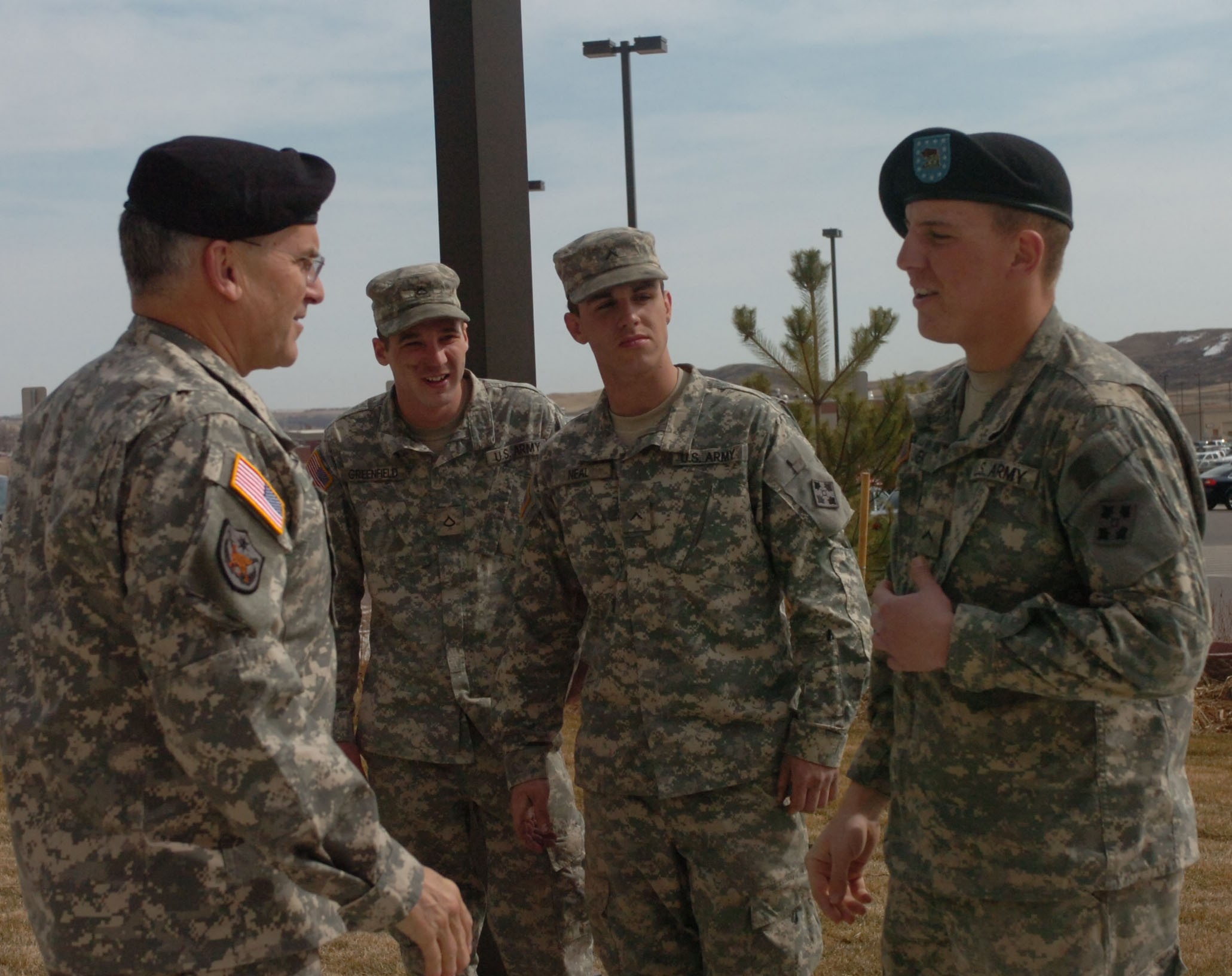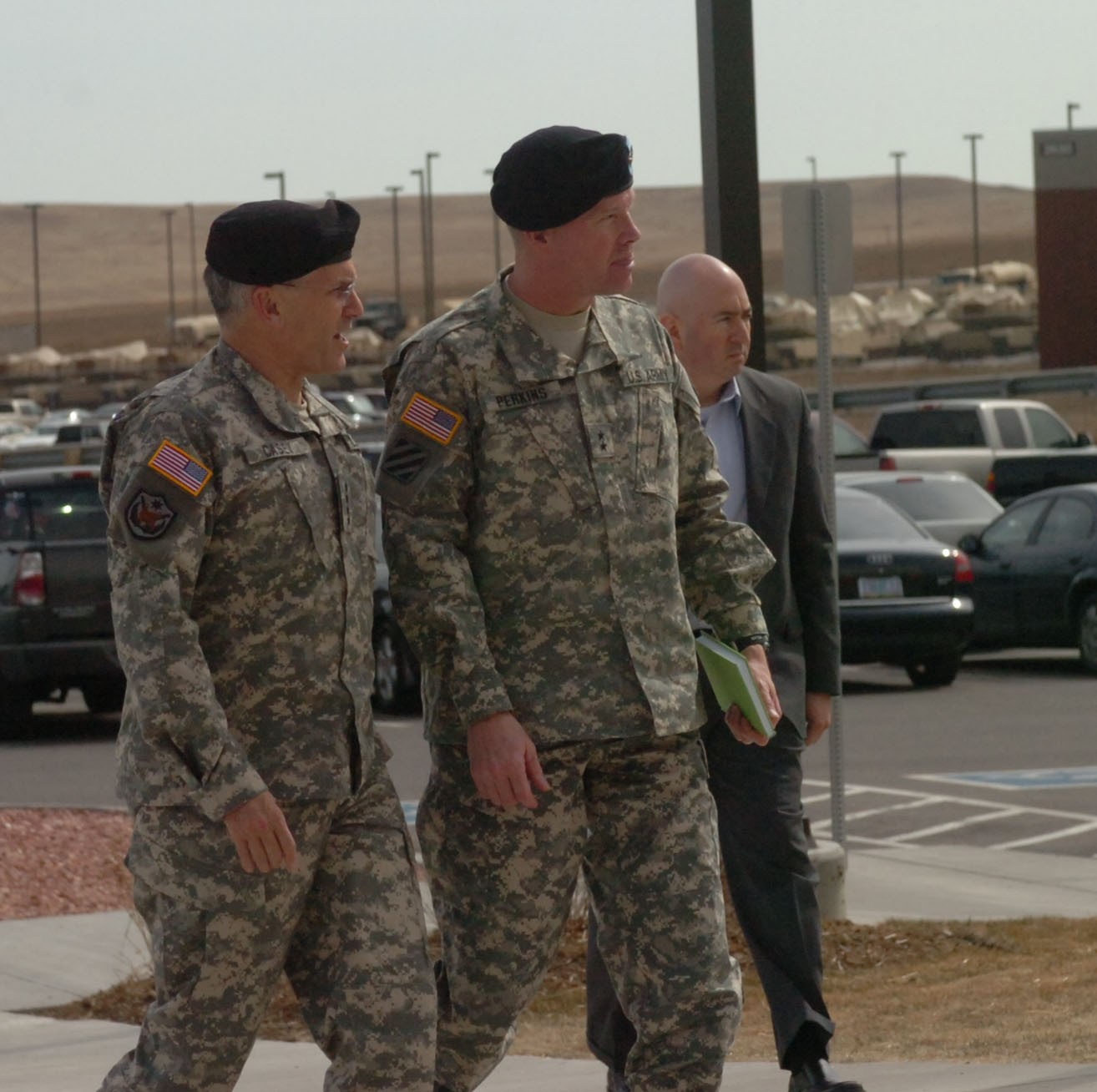FORT CARSON, Colo. -- The Army chief of staff visited the 4th Infantry Division and Fort Carson, March 4, to learn how the brigades are preparing for their upcoming deployments.
During the visit, Gen. George W. Casey Jr. was briefed by the leadership of the 4th Infantry Division, 1st Brigade Combat Team and 43rd Sustainment Brigade on their upcoming deployments to Afghanistan.
"We talked through their training and their preparation, and I was pleased with what I saw," Casey said.
Casey also had the chance to have lunch with a handful of noncommissioned officers.
"I had lunch with six great staff sergeants, and I must say - we're just wrapping up the year of the noncommissioned officer - and when I talk to staff sergeants like these gentlemen, I feel pretty good about it - not only our noncommissioned officer corps, but our whole Army," he said.
In a statement at the press conference, Casey noted the support that Soldiers and families get from the local community.
"We couldn't do what we do as an Army if it wasn't for the support of the communities around our installations," he said. "I just want to take this opportunity to publicly say 'thank you' to everyone here in the local community for what they do for our Soldiers and for our families."
During a meeting with local and regional media representatives, Casey fielded a wide variety of questions from the media including what the Army is doing to increase dwell time - the time Soldiers spend at home between deployments.
"We set a goal for ourselves back in 2007 that by 2011 we wanted to get one year out, two years back for the active force, and one year out and four years back for the Guard and Reserve," he said. "We have been working hard toward meeting that goal."
A big factor in obtaining that goal was increasing the size of the Army by 74,000 Soldiers across the active, Guard and Reserve forces; the goal was met last year he said.
The drawdown in Iraq is also a factor on how much dwell time Soldiers will have. Casey noted that the increase of Soldiers in Afghanistan is occurring as the Army scales back its troops in Iraq.
"So, what you see is, we will actually get to about 70 percent of the active force ... with one year out, two years back, by (2011) and have 80 percent of the Guard and Reserve meeting our goal of one year out, four years back, also by then," he said
Casey said that the 20 percent who won't get two years of dwell time will get 18-24 months back home.
"The bottom line is we're making progress toward a more sustainable ratio of time deployed and time (home)," Casey said.
The operational tempo and lengths of the wars in Afghanistan and Iraq have had an impact on Soldiers, and the Army is finding new ways to effectively get help to Soldiers suffering from post-traumatic stress, he said.
"As an Army, we have been focused on reducing the stigma ... associated with post traumatic stress. We have had some success. Our survey shows that now about 50 percent of the Soldiers feel that there is a stigma attached to getting mental health support as opposed to 80 percent a few years ago," he said.
"We have been at war for 8 1/2 years; we're going to be at war for somewhat longer. The human body and the human mind weren't made to deal with the brutalities of combat for sustained periods. What you see with our combat-seasoned veterans, they understand, and so they are more and more willing to get the help they need."
Casey noted that Fort Carson has blazed a trail in eliminating the stigma of seeking behavioral health care by moving behavioral health providers down to the unit level where they can work more closely with the Soldiers. He said he plans to take some of those procedures and expand to them to the rest of the Army.
Casey also addressed an issue that has been grabbing headlines since it was first announced several weeks ago - a review of the Army's "Don't Ask, Don't Tell" policy.
"The fact of the matter is that President Obama said that he wants to work with us to do this, and (Secretary of Defense Robert Gates) has laid out a framework where we will one, poll the Soldiers and families so we have an understanding of where they are in this," he said. "Second, we'll look hard at the challenges of implementing this - figure out how we can mitigate some of the challenges. We don't know that now. The third element is, we'll really look at those first two things and (determine) what would be the impact, of implementing a change, on readiness and military effectiveness."
Concerning another sensitive issue - garrison budget cuts across the Army - Casey explained that $500 million had already been put back into the funds used for base operations and that the Army had to be vigilant in finding effective ways to spend its money, but not at the expense of programs for Soldiers and families.
"In the last two years, we have doubled the amount of money we have put toward Soldiers and family programs, and we have increased the amount of money that we have put toward base operations - funding to run installations - by about 10 percent," Casey said. "So, we put a lot more money, already, toward this. We have to operate these installations more efficiently. We can do that."
Believe me, we are committed to resourcing the installations to sustain quality of life for Soldiers and families. We're going to do that, but we are also going to operate efficiently."






Social Sharing